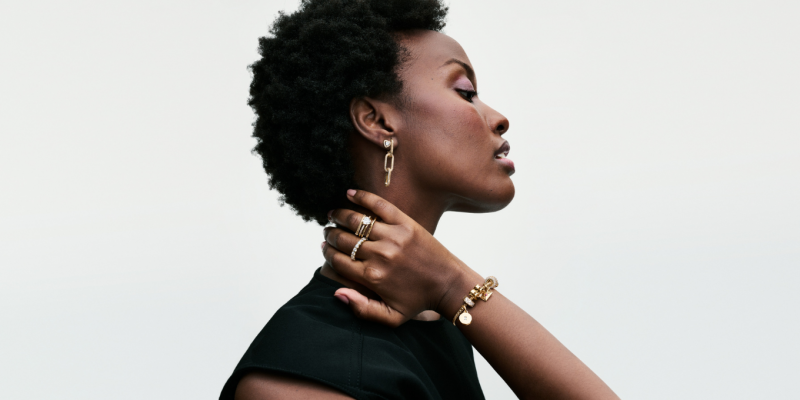Health & Fitness
How to make the ultimate desk lunch
Woman laughing alone with salad no more.
by : Victoria DiPlacido- Sep 26th, 2017

Let this be the end of sad desk lunches once and for all. We’re partial to the stainless-steel PlanetBox Rover ($56, planetbox.com) for its Type-A-approved compartments that make portion control a breeze. It’s also lighter than glass containers, BPA-, phthalate- and lead-free and laughably easy to clean. Here’s how to fill it, according to three diet pros.
Nigma Talib

To appear to be aging backwards: Quelling inflammation in the body is key to an ageless face, says Nigma Talib, a naturopathic doctor based in London and L.A. A varied diet of colourful antioxidant-rich foods, along with protein and gut-friendly grains like buckwheat, will go a long way in making this happen—just take a look at her celeb clients, like Penélope Cruz and Rosie Huntington-Whiteley. How to know if you’re suffering from inflammation? “It feels like fatigue and foggy mindedness,” says Talib. “Physically, it manifests as joint and muscle pain, tension in the neck and lower back and feeling hotter than most people do. Your face will look more puffy and swollen.”
SECTION 1
Probiotics.
SECTION 2
2 turkey slices rolled up with cilantro, cucumber, green chilies and fresh lemon.
SECTION 3
Handful of almonds.
SECTION 4
Sexy Skin Salad: 3 to 5 oz. (85 to 140 g) of protein with arugula, celery, mango and pumpkin and pomegranate seeds with apple-cider vinegar, lemon and turmeric dressing.
SECTION 5
Roasted sweet potato stuffed with tuna.
Kimberly Snyder

To look lit sans highlights: L.A.-based nutritionist and Radical Beauty and Beauty Detox series author Kimberly Snyder provides on-set lunches for A-listers, so she knows about food meant to make you glow. “One of my favourite reasons for using sweet potatoes is that they are packed with vitamins A, B6 and C,” says Snyder. “These are important nutrients for improving skin elasticity and collagen production.”
SECTION 1
2 tbsp (30 mL) of salsa.
SECTION 2
Handful of raw veggies. “Raw food contains digestive enzymes that help break down your meals,” says Snyder. “They are high in water (which boosts hydration) and maintain their vitamin content—whereas cooking foods can cause some of the vitamin content to diminish—therefore preserving the nutrients’ beneficial effects on healthy, glowing skin.”
SECTION 3
1/2 cup (125 mL) of coconut yogourt. “I never recommend dairy yogurt,” says Snyder. “Coconut yogurt is a better alternative that is packed with probiotics, which keep our systems in balance and toxicity in check, and improve our synthesis of B Vitamins. (They are essential to healthy skin.)
SECTION 4
1/2 cup (170 g) of roasted carrots or sweet potatoes. “Carrots are rich in beta carotene, an antioxidant that is converted to Vitamin A inside the body, helping to repair skin tissue and protect against the sun’s harsh rays,” says Snyder. “Roasted carrots provide even more skin-friendly beta carotene than raw ones.”
SECTION 5
1 cup (250 mL) of sun-dried tomato, basil, raw-corn and quinoa salad. “Quinoa is high in fibre, magnesium, B vitamins, iron, potassium, calcium, phosphorus, vitamin E and various other beneficial antioxidants,” says Snyder. “It also contains amino acids to build protein. One cup of sun-dried tomato is packed with B vitamins, which are essential for maintaining the nervous system and keeping our skin healthy, as well as vitamin C, one of the most important beauty nutrients that keeps our skin looking its healthiest and most beautiful. Basil has anti-microbial activity, which fights against a wide range of bacteria, yeasts, molds and viruses (we’ve got to clean these “ickies” up if we want to be our most radiant from the inside out!). Raw, organic corn provides minerals such as phosphorous, iron and magnesium, which acts as a natural cellular protectant and encourages healthy skin tissue growth.”
Amy Sherman

To refuel after a post-lunchtime workout: What you eat after working out is of “utmost importance” when it comes to achieving the results you’re after, says Amy Sherman, certified holistic and sports nutritionist and founder of Honey Bee Meals in Toronto. While carbs and protein are top priorities, “don’t forget about fat as a part of a healthy diet,” she says. All of the foods suggested below are antiinflammatory, “which is important to consider for our overall health and performance,” she notes.
SECTION 1
SECTION 2
6 oz. (170 g) of sweet-potato fries. “Sweet potatoes are a great source of carbohydrate and nutrient rich vegetable,” says Sherman. “This portion of sweet potato fries provides approximately 40g of carbohydrate as well as vitamin A, fibre and potassium. After a workout, carbohydrates are needed to replace the glycogen lost through exertion and increase their storage in our body. Carbs are the most effective way to reduce post-workout soreness as well.”
SECTION 3
3/4 cup (250 g) of zucchini “noodles.” “No recipe required,” says Sherman, “just a spiralizer!”
SECTION 4
5 oz. (140 g) of roasted Brussels sprouts. “We know how ‘good’ green veggies are for us so it’s important to include them in every meal. Brussels sprouts are a cruciferous vegetable with an excellent source of fibre, riboflavin, magnesium, phosphorous and other trace minerals. They are delicious roasted. Zucchini is a good source of many vitamins & minerals (thiamin, niacin, vitamin A, C). Both Brussels sprouts and zucchini provide more carbohydrates in this meal to further replenish muscles.”
SECTION 5
8 pieces (about 5 oz., or 140 g) of paleo chicken bites. “The chicken bites provide a delicious and complete source of post-workout protein,” says Sherman. “Protein provides the necessary amino acids for muscles to repair. Amino acids are the building blocks of protein and we need to obtain the essential amino acids because our body cannot produce them. Our muscles are made up of three branch chain amino acids (BCAAs) and the most abundant of these BCAAs is called leucine (it is believed to best stimulate muscle protein synthesis). Therefore, we need to replenish our body by eating or drinking sources of protein—especially leucine. Chicken is rich in leucine.”
A version of this article originally appeared in the November 2017 issue of ELLE Canada.
Newsletter
Join our mailing list for the latest and biggest in fashion trends, beauty, culture and celebrity.
More from Health & Fitness
Read Next

Fashion
Tap Into the Tenniscore Aesthetic With These Stylish Pieces
Game, set, match!
by : Lauren Knowles- Apr 23rd, 2024

Fashion
Reitmans and The Birds Papaya Just Dropped The Dreamiest Spring Collection
Welcome to Sarah's Playhouse.
by : Melissa Fejtek- Apr 22nd, 2024

Fashion
This Jewellery Brand Has a Whole New Look And It’s Everything
Here are the seven pieces we’re coveting.
by : ELLE Canada- Apr 10th, 2024

